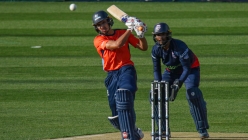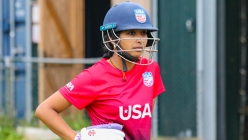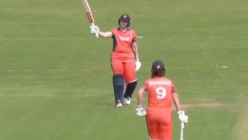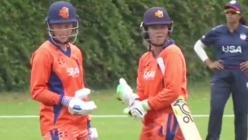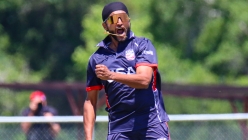USA Cricket News
Candidate Profiles: League Director for USA Cricket
2018 May 31 by DreamCricket USA
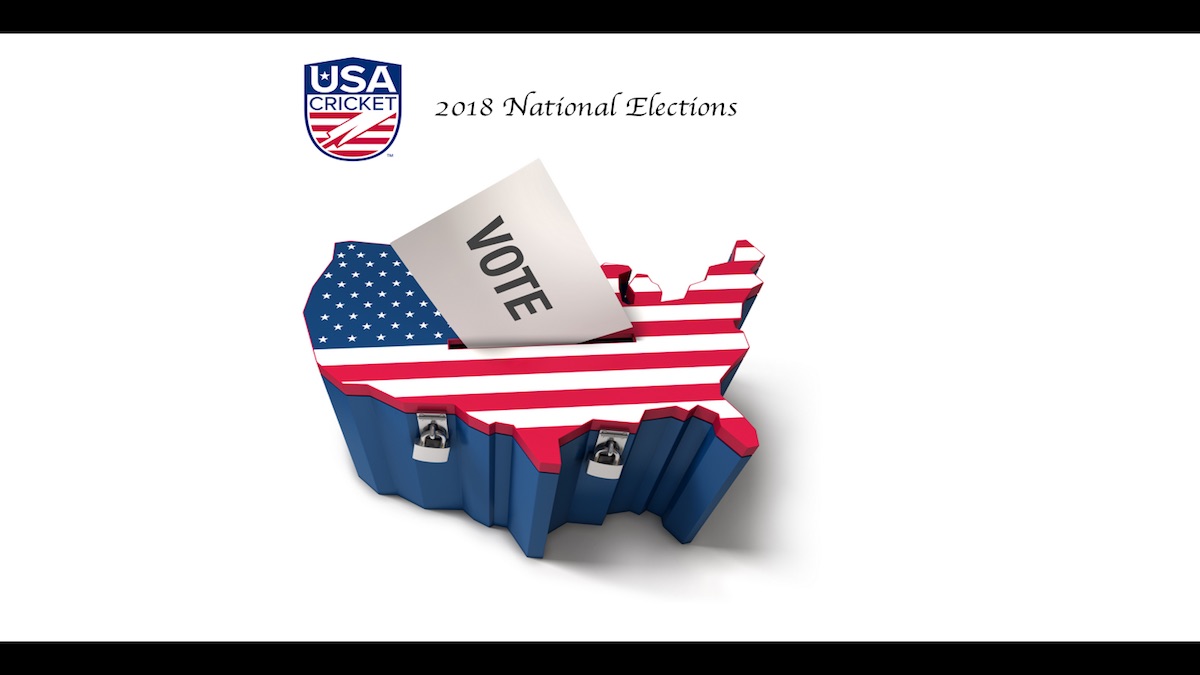
By Venu PalaparthiThree current league administrators, one former administrator and coach and a former USA cricketer are contesting for the lone league director position in the forthcoming USA Cricket election. Here are their profiles.
In this series, DreamCricket will focus on some of the prominent candidates for the seven board positions starting with the League Director position. In a departure from past elections, DreamCricket will not take an editorial stance regarding the candidates that are contesting in the forthcoming election. Perhaps for the first time in recent memory, this election offers so many great choices. Our goal is to provide you with brief profiles of as many candidates as possible. We hope that you will review the information and perhaps speak to the candidates before you exercise your vote.
The only editorial opinion we are going to offer is regarding Usman Shuja, who has been elected unopposed as Player Director. Usman is a man of strong character who combines tenacity, vision and integrity. DreamCricket is excited about the prospect of having someone of his caliber and experience on the board.
Coming to the League Director spot, three current league administrators, one former administrator and coach and a former USA cricketer are contesting to become the lone league representative in the forthcoming USA Cricket election. Here are their profiles:
Atul Rai
Dr. Atul Rai is a seasoned administrator and current president of the Southern California Cricket Association (SCCA).
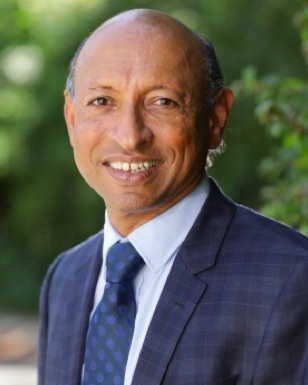 Between 2001 and 2003, Dr. Rai was the President of USACA, a period that saw USACA regain the trust of several Full Members. Dr. Rai’s two-decades long association with the Department of Recreation and Parks in Los Angeles has helped retain cricket’s place at the front and center of the Woodley Complex. Two of the four natural turf pitches Woodley’s Leo Magnus Cricket Complex, the Wong and Marder Fields, became operational during his first tenure as President of SCCA.
Between 2001 and 2003, Dr. Rai was the President of USACA, a period that saw USACA regain the trust of several Full Members. Dr. Rai’s two-decades long association with the Department of Recreation and Parks in Los Angeles has helped retain cricket’s place at the front and center of the Woodley Complex. Two of the four natural turf pitches Woodley’s Leo Magnus Cricket Complex, the Wong and Marder Fields, became operational during his first tenure as President of SCCA. In 1999, Dr. Rai worked with Cricket Australia, BCCI and Mark Mascarenhas to bring India-A and Australia-A to play in the U.S. India A was captained by VVS Laxman and Australia A by Adam Gilchrist. This internationally televised five-match cricket series was attended by 5,000 spectators. For a brief period, USA appeared ready for prime time. It was also during his first term as SCCA President in 1997 that Woodley hosted a team from Jamaica that featured Franklyn rose and Jimmy Adams.
Over the years, Dr. Rai became closely associated with other groundbreaking initiatives such as USA’s failed bid for hosting ICC Trophy in 2001, Los Angeles’ first junior school program overseen by Malcolm Nash and the creation of a national U19 program as well as the inaugural U19 tournament in Dallas. Dr. Rai was also a key contributor to a strategic roadmap in 2001, which paved the way for the ICC’s first 'Project USA' in 2003. Writing at the time, cricinfo described Dr. Rai as ‘pivotal in attracting the support of Malcolm Speed (of ICC).’ Under the ICC plan, the ICC was to organize four triangular ODI events in USA at a cost of $12 Million. The goal was to use the $9 Million in profit from these events towards cricket development in the U.S. Had the plan succeeded, USA would have become a full member by 2011.
Despite Dr. Rai’s electoral defeat to Gladstone Dainty in June 2003, the ICC proceeded with Project USA until relations between USACA and ICC became increasingly adversarial. The project was eventually canceled in 2005 at the end of Dainty's first tenure.
Also under Dr. Rai’s leadership in 2003, USACA and ICC began a series of meetings to discuss the possibility of USA co-hosting the 2007 World Cup as a way of fast-tracking cricket’s growth in the U.S. This initiative too fizzled following his departure.
USA’s last golden period on the field also coincided with Dr. Rai’s tenure. It was also during Dr. Rai’s time at the helm of USACA, in 2002, that USA won the Americas Cup in Argentina. Under Dr. Rai’s leadership, USACA sent the team on a two-week preparatory tour of Antigua. USA’s victory in this tournament along with its prior victory over Ireland in the 2001 ICC Trophy in Toronto ensured an invitation to the Six Nations Tournament in the UAE. USA defeated Scotland, Namibia, Netherlands and UAE in this tournament helped USA secure an invitation to the ICC Champions Trophy in 2005. That was the only time USA has ever played in ODIs.
Following his election defeat in 2003, Dr. Rai resumed his leadership role at his Santa Barabara CC until he returned in an advisory capacity to the national stage in 2012 as a member of the National Advisory Board of the American Cricket Federation. Professionally, Dr. Rai is a Managing Dentist and President at Santa Barbara Dental Spa and is associated with numerous philanthropic initiatives including Doctors without Walls.
“I believe that I can continue to help USA cricket and the new Board by working together with the Board of Directors and our partners by sharing ideas and strategies and provide the experience and balance that is needed,” Dr. Rai said in response to a request for comment.
Sushil Nadkarni
Sushil Nadkarni is a Houston based cricketer with India U19, Maharashtra, and USA national team experience on his resume along with a glittering array of cricketing records.
.jpg)
Following that series, Nadkarni played for Maharashtra in the 1995/96 season. Having then prioritized academics over cricket, Nadkarni emigrated to the U.S, in 1999 and joined the graduate program in engineering at Texas A&M.
In the U.S., Nadkarni kept a low profile initially before emerging on the national scene in the Major League Cricket tournament in 2005, where he scored 171 not out at Brian Piccolo Park in the first game and 214 off 130 balls in the second. He was tournament MVP in the tournament and booked himself a spot on USA cricket team the following year. In 2006, Nadkarni debuted for USA scoring 111 in his very first match against Cayman Islands.
In 2009, Nadkarni suffered a torn achilles tendon. Nadkarni rushed back into the US squad in 2010 even though he had not fully recovered. He immediately struck with the bat scoring 57 not out in a must win game against Nepal, thus helping USA claw itself out of the bottom-run Division 5. Upon recovering full fitness, Nadkarni scored a quickfire 101 from 54 balls, once against against the hapless Cayman Islands.
In August of that year, in the Division 4 tournament in Italy, he was the highest run-getter with 216 runs, accumulated three man of the match awards and finished the player of the tournament. For his spectacular efforts, he also won the Radiant Info T20 Comeback Player of the Year at DreamCricket's annual awards.
SS Nadkarni’s heroics with the bat continued into 2012, earning him the epithet “Steam Ship.” In 2012, DreamCricket.com named Nadkarni the New Inning Batsman of the Year as well as 2012 Cricketer of the Year for leading USA in all forms of the game with a combined total of 425 runs including three half-centuries.
At the time of his retirement in 2014, Nadkarni told DreamCricket.com he intended to surpass his records through his contributions to youth cricket activities in Greater Houston. He did not waste any time. Nadkarni's Master Strokes Cricket Academy, based in Houston, is regarded as one of the finest youth cricket programs in the country.
In 2016, Nadkarni was appointed to the ICC National Advisory Group that advises USA Cricket on future growth and development plans. As a member of the advisory group, Nadkarni provides guidance and advice on implementing high performance programs for men, women and youth. Professionally, Nadkarni is a partner at Environmental Resource Management, a Houston based global provider of consulting services in environmental, health, safety and risk areas.
Speaking about his candidacy, Nadkarni said, “Having represented Team USA at the highest level for almost a decade, having played across the country in various leagues including club cricket for two decades, and serving as an advisor to USA Cricket including many voluntary assignments, I want to bring my strong reputation, business experience, and deep understanding of the issues and challenges facing USA cricket to represent all USA stakeholders on the USA Board.”
Mark Demos
Like Atul Rai, Mark Demos is a highly regarded former league administrator, a coach and a mentor. He co-founded Seattle’s North West Cricket League and coached the North West Region, helping the team win the national championships in 2010. More recently, Mark has been coaching in the Dallas Cricket League, working extensively with their U15 and U18 teams.
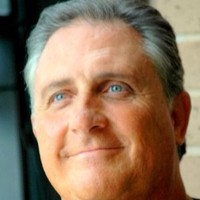 Born in Zimbabwe, Mark played for St. George’s College and other youth teams. Following military service and six years in the U.S., Mark moved to South Africa where he played premier league cricket in Johannesburg and coached high school cricketers.
Born in Zimbabwe, Mark played for St. George’s College and other youth teams. Following military service and six years in the U.S., Mark moved to South Africa where he played premier league cricket in Johannesburg and coached high school cricketers. In 1991, he moved to Seattle and began playing for Seattle Cricket Club. Back in the day, teams from Seattle traveled to Vancouver to play in the British Columbia Mainland Cricket League (BCMCL). In fact, Demos represented that league in a match against the MCC. In 1994, he co-founded the North West Cricket League. He also captained the Seattle team that won the BCMCL - the first and last time that has happened.
Demos continued to play, coach and work on growing the North West Cricket League through the early 2000s. When the league began playing in regional competition featuring NCCA and SCCA, Demos took to coaching the league side. Within three years, the team became formidable and began winning against the region's two larger leagues.
By 2010, he was coaching the North West Region, which incredibly won the national championship in Florida. The same year, he moved to Dallas and began coaching NTCA and the Central West side. Once again, he managed to take the Central West team to the National T20 finals in New Jersey. His coaching resume also includes his stint as the coach of the Gladiators, which reached the Maq T20 finals in 2015.
Mark is known as much for his cricketing acumen as he is for his outspoken ways. “I will encourage and support good behavior and stand against bad! When a player has talent and they work very hard to have it recognized, [the talent] deserves a pathway forward and an opportunity,” Demos wrote when asked to describe his candidacy.
Shuja Khan
Shuja Khan is the President of Philadelphia Cricket League, which he founded in 1996. He is also the founder of YouCricketer.com, a provider of league and club management as well as social media software to cricketers. Beginning 2011, Shuja Khan has served as Vice President of Cricket Council USA, the organization founded by Maq Qureshi, which has organized successful T20 events across the U.S.
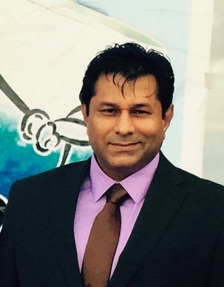 Khan founded the New Castle County Cricket Club in 2003, which has won the league championship four times in the Philadelphia Cricket League. Working with USACA, Khan arranged the 2000 USACA trials at Haverford, Pennsylvania.
Khan founded the New Castle County Cricket Club in 2003, which has won the league championship four times in the Philadelphia Cricket League. Working with USACA, Khan arranged the 2000 USACA trials at Haverford, Pennsylvania. Khan lists his ability to find funds and generate sponsorship support as a key strength. The league that he runs awards a cash prize of $10,000 to the winning team making it the only 40-over competition in the Americas to feature a cash reward. Among his sponsorship initiatives, he successfully arranged sponsors for the Philadelphia Terminators at the Radiant Info T20 in 2008 and found a key sponsor for the Washington Cricket League in 2003. Khan has also arranged fundraising games for Delware Physicians for six years.
When asked to comment about what he planned to accomplish as League Director, Khan wrote: “As a League director there are multiple items on the plate. But most important will be to build similar standards for all leagues in terms of format, umpire quality and competitiveness. Leagues games have to be competitive as eventually the players will emerge from leagues to play in US National teams.”
Khan also emphasized that he would “look to identify key people in league(s) who can help raise funds/sponsors for the league(s) to introduce cash prizes for top teams and players to get the best out of league, clubs and players.” Khan is an IT consultant. He lives in Delaware with his wife and three children.
Lesley Lowe
Lesley Lowe runs the Commonwealth Cricket League (CCL) on New York. The Commonwealth Cricket League is generally considered the largest hardball cricket league in the country.
According to CricClubs, CCL’s 2018 summer season features 90 teams across three divisions. Such success, that too in New York, where finding a cricket ground makes finding a parking spot seem like a walk in the park, requires very strong leadership credentials.
Lesly could not be reached for comment.
A note on vote-eligible leagues and the ongoing league muddle
The following twenty two leagues were deemed eligible to vote prior to the completion of a peer review (this list is subject to change): Arizona Cricket Association, Bay Area Cricket Alliance, California Cricket Academy, Cricket Association of Phoenix, Northern California Cricket Association, North Texas Cricket Association, Orange County Cricket Association, Southern California Cricket Association, Utah Cricket Association, American Cricket Academy & Club of St Louis – Major Cricket League, American Cricket Academy & Club of St Louis – Major Tennis Cricket League, American Cricket Academy & Club of St Louis – Major Women Cricket League, Atlanta Cricket League, Bolingbrook Premier League, Michigan Cricket Association, Midwest Cricket Conference, South Florida Premier Cricket League, Commonwealth Cricket League, Cricket League of New Jersey, New Jersey Softball Cricket League, New York Metropolitan Cricket League, Triangle Cricket League.
At first glance, a majority of the leagues are bona fide. Many are the largest leagues in their parts despite their dismal registered club-count. However, the list also includes a few names that appear not to meet the common-sense definition of a league.
The ‘league’ membership category has unwittingly become susceptible to gaming by organizations that do not, on paper, operate a league. The constitution defines the league as a “collective group of clubs ” which has staged “at least one cricket competition in the previous twelve months involving at least three clubs.” The looseness of this definition stems from three areas of weakness - (i) a lack of a clear definition of “cricket competition" (ii) allowing a “collective group of clubs” instead of clubs that play in a competition conducted by the league, whether they are playing each other in the same division or playing other clubs in a different division and (iii) the lack of specificity about the league being a distinct entity.
Instead of naming the bad actors and inviting their wrath like in prior years, let me give you a hypothesis on how my own organization could transform magically into a league or even multiple leagues even if it is only just an academy.
Every year, DreamCricket organizes an annual pink ball event featuring our own junior teams, moms of our junior cricketers as well as the NJ Starlets women's team to raise funds for breast cancer research. This event features a game or two that are played over a single weekend. This event also features a team of boys and girls playing their moms. The whole idea for the event is to raise awareness regarding breast cancer and raise funds for the cause. We are supported in this endeavor by Robert Wood Johnson Hospital and MD Anderson Cancer Center.
Now, reasonable folks who play sport know that this does not constitute a league. In fact, a dog-walker at the park stopped by at last year’s event and asked us if the spectacle he was witnessing (as his dog was doing its job) was a league match, amused to see little kids playing against adult women. We clarified that it was a breast cancer relief event. He hurried away, dog in tow, upon realizing that we might ask him to write a check to the American Cancer Society. Granted, there is an opportunity to register this event as a league because the constitution permits that, but why would anyone, in good conscience, do that?
Now, another way I could do this is take each of my five age-group teams, which play in different age-group leagues, but also play practice matches against each other on some weekdays, and call the academy a league. Once again, my conscience would not permit me to do that, but it is certainly an option for those who don't lose sleep over such indiscretions.
Here is another example to demonstrate how the same or affiliated entities can register multiple leagues. Without a rule to prevent that, the largest cricket league in my region could carve out a league for Division A, one for Division B, one for Division C and one for its premier division. In addition, it could carve out a league for T20 if it wanted to. This kind of league inflation does not bode well for USA Cricket. I cannot think of a good reason for that other than vote-grabbing.
I am not suggesting that this is a major issue. In fact, as I noted previously, there are only two or three leagues on the list that need a thorough check. As I wrote in a previous article, when viewed in the context of how so many of the large 50-club leagues struggled to get even three of their teams registered, it is pleasantly surprising and mildly amusing to see the success of these smaller outfits. Many of the larger leagues did not allocate enough time to get on the list and have therefore forfeited their right to complain.
As an interesting aside, two of the candidates running for league director, Khan and Nadkarni, belong to leagues that did not register the threshold number of clubs to qualify as voting leagues. North West Cricket League, the league that Demos founded, also did not expend the effort in registering itself as a league. As a result, only two candidates – Lesley Lowe and Atul Rai can actually count on their own league’s vote.
As league director, perhaps the first thing the candidates must contemplate is ways to get the leagues to wake up and play a more active role, to stand up and be counted. The second task for them is to serve as an advocate for closing any remaining gaps in the constitution so that their board position is beyond reproach.
